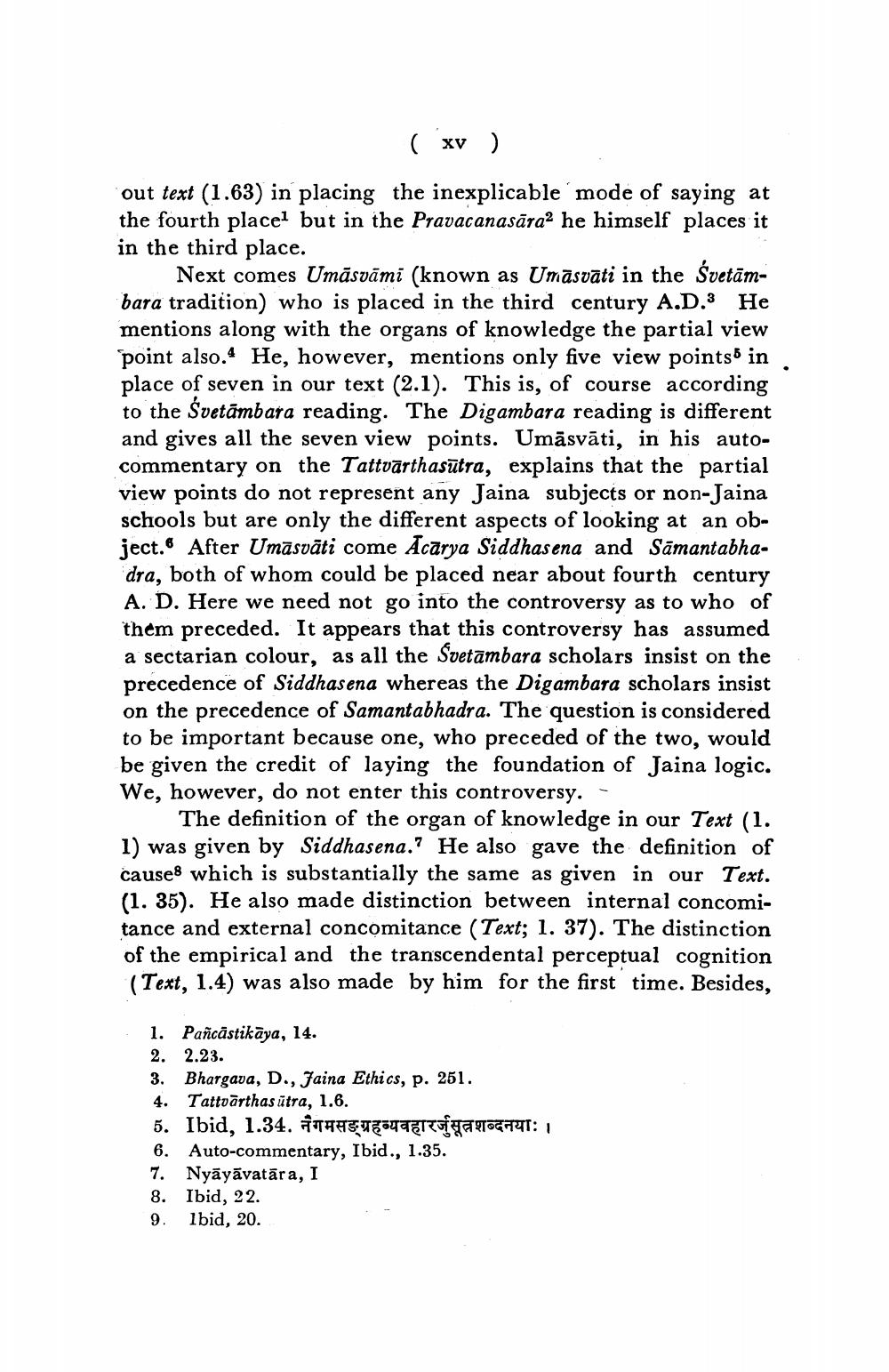________________
(xv)
out text (1.63) in placing the inexplicable mode of saying at the fourth placel but in the Pravacanasāra? he himself places it in the third place.
Next comes Umāsvāmi (known as Umāsvāti in the Svetāmbara tradition) who is placed in the third century A.D.3 He mentions along with the organs of knowledge the partial view point also.4 He, however, mentions only five view points in place of seven in our text (2.1). This is, of course according to the Svetāmbara reading. The Digambara reading is different and gives all the seven view points. Umāsvāti, in his autocommentary on the Tattvārthasūtra, explains that the partial view points do not represent any Jaina subjects or non-Jaina schools but are only the different aspects of looking at an object. After Umāsvāti come Ācārya Siddhasena and Sāmantabhadra, both of whom could be placed near about fourth century A. D. Here we need not go into the controversy as to who of them preceded. It appears that this controversy has assumed a sectarian colour, as all the Svetāmbara scholars insist on the precedence of Siddhasena whereas the Digambara scholars insist on the precedence of Samantabhadra. The question is considered to be important because one, who preceded of the two, would be given the credit of laying the foundation of Jaina logic. We, however, do not enter this controversy.
The definition of the organ of knowledge in our Text (1. 1) was given by Siddhasena.? He also gave the definition of causes which is substantially the same as given in our Text. (1. 35). He also made distinction between internal concomitance and external concomitance (Text; 1. 37). The distinction of the empirical and the transcendental perceptual cognition (Text, 1.4) was also made by him for the first time. Besides,
1. Pañcâstikāya, 14. 2. 2.23. 3. Bhargava, D., Faina Ethics, p. 251. 4. Tattvārthas ütra, 1.6. 5. Ibid, 1.34. ATA95:15Targa NCHIT: 1 6. Auto-commentary, Ibid., 1.35. 7. Nyāyāvatāra, I 8. Ibid, 22. 9. lbid, 20.




